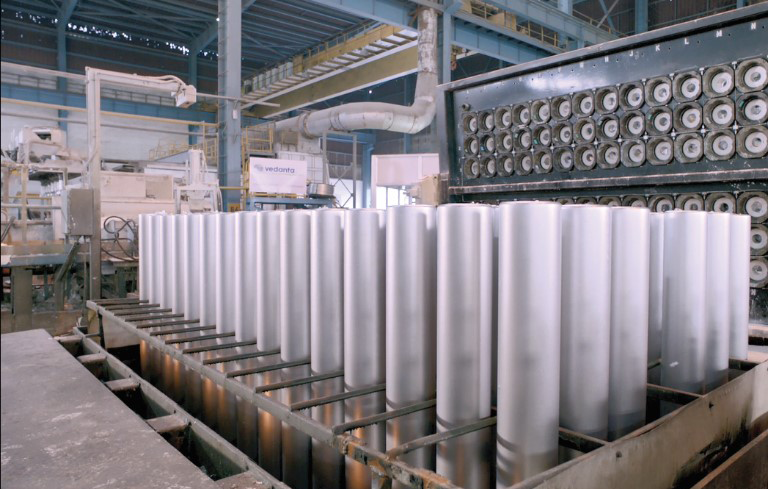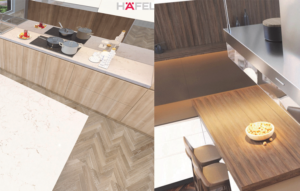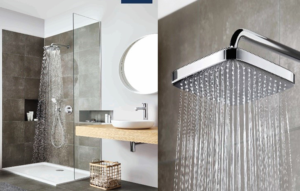Driven by the want for a better life and the ambition to flourish, humankind is constantly on a look out for opportunities that accelerate growth. Our progress as a civilization is oft reflected in the advancements of the pillars that support the lifeblood of modern life.
Access to adequate, safe and affordable housing and basic infrastructure is a basic human necessity, and a part of Envision2030 targets under Sustainable Development Goal (SDG) 11, which aims to make cities and human settlements inclusive, safe, resilient and sustainable. And this is where aluminium, as the ‘Metal of the Future’ has a critical role to play in shaping the future of construction industry.
Strong, lightweight, corrosion resistance, exceptional design flexibility, ability to withstand a broad range of noise proofing, ease of fabrication, assembly and transportation, durability and infinite recyclability – with these inherent properties, we can thank aluminium for redefining architecture, from functionality to style to sustainability. Aluminium has changed the face of modern cities and towns, taking us skyward, reducing carbon-footprint of buildings, and giving architects a free wheel on creativity. No wonder aluminium has, in a very short span of time, become one of the most popular construction materials among builders, architects and designers.
Real estate and construction activity are the fundamental economic indicators of a region/economy, and witnessed in increasing urbanization, more commercial construction, greater migration into cities and improvement in standard of living. Rapid urbanization has resulted in exponential growth of cities, and the evolving infrastructure landscape has now led us into the new paradigm of ‘sustainable architecture’.
Today, in India, the building & construction industry is still a large consumer of wood/other traditional raw materials and energy, making the role of environmental parameters regarding the design and construction of building applications even more significant. Aluminium is integral component of the journey of transformation for the construction industry, offering the construction industry an opportunity to design and manufacture high performance structures that are strong, safe, energy-efficient, and environmentally friendly.
Worldwide, aluminium is already a game changer in the world of architecture. Case in point, the 2019 world average for aluminium consumption in construction was 24%, compared to 31% in China, and India where it was only 11%, indicating immense potential for exploring and expanding usage of aluminium in this segment. In India, the demand for aluminium in construction is driven by its usage in façade and fenestration. We are yet to explore aluminium applications in intelligent façade systems as well as bigger infrastructural projects like skyscrapers, domes, bridges, rooftops, etc.
Aluminium is the second most used metal in buildings today and cuts across commercial building to domestic dwelling. Aluminium can be formed into nearly any shape, which makes it extremely popular for structural applications and building components like doors, windows, sliding, roofing, curtain walls, sun shading, flashings, balustrades and decorations, to name a few. Aluminum offers similar, or better, strength and resilience while being lightweight. In fact, when used as a base metal in construction, aluminium structures weigh 35-65% less than traditional metals, which comes with its benefits. For example, modern aluminium alloys are easily able to support the weight of heavy glass spans, for building designed around harnessing natural light for energy efficiency. Aluminium’s high reflectivity is another key feature, making the metal an ideal roofing material in construction. Since it reflects solar energy and does not absorb a lot of radiant heat, making it easier to keep interiors cooler in summer and warmer in winter.
Aluminium doors and windows or their frames are perfectly airtight, keeping dust, air or water at bay, making it the preferred choice for fully air-conditioned buildings. Aluminium sheets have excellent soundproofing, and do not allow external noise into the building, or interior sounds from escaping. Compared to other metals, aluminium alloys are easy to cast, forge, extrude, roll or weld, which makes it very easy to work with, assemble and transport. High formability allows for experimental shapes, without the fear of the material breaking. And finally, aluminium structures have a long service life, standing for 25-30 years without the need for maintenance. At the end of life, aluminium can be easily recycled for further usage downstream.
All of these reasons put together make aluminium an architect’s dream metal. No wonder, aluminium has been extensively used to build some of the world’s most iconic structures, be it The Ferrari World giant entertainment park in Abu Dhabi or Empire State Building in the US. Spanning an area of 200,000 square metres, the Ferrari World has the largest aluminium roof in the world – make one wonder what else is possible if a designer could leverage the limitless potential of aluminium in construction?
India’s economy in the next five years will be driven by manufacturing growth on the back of a strong economic recovery. India’s construction sector is expected to be the third largest in the world after China and US, with an overall value of $1 trillion by 2025. The Union Budget 2021-22 has given a major boost to the country’s beleaguered construction industry with a planned capital expenditure of USD 75.8 bn, which is an increase of 34.5% from last year’s budget. With the government focusing on infrastructure to drive the economic growth, the construction industry is expected to rebound by 14.5% in 2021, as per leading analytics company reports. Apart from the planned federal capital expenditure, the central government has also committed USD 27.4 bn to states and autonomous bodies for capital expenditure in their respective areas. So, we can foresee a significant rise in construction activity in the near term.
As India’s largest producer of aluminium and value-added products, Vedanta is uniquely positioned to cater to this demand. Vedanta Aluminium offers a wide portfolio of high-quality aluminium products for the downstream manufacturers/extruders like billets, ingots and rolled products. These are then extruded into structural components which are further fabricated for usage in a diverse range of applications like floating ceilings, windows, doors, stairs, wall panels, roof sheets, curtain walls and many more. In fact, our magnesium-silicon 6xxx alloys in billets are preferred among extruders as it is conducive to manufacturing the most intricate architectural shapes.
With 400kT billet casting capacity per annum, we are the largest producer and exporter of top-quality aluminium billet producers in India. Our world-class casting facilities use state-of-the-art Wagstaff Hot Top Air Slip casting technology, one of the best in the world. Unwavering focus on customer technical services support, R&D and innovation have made it possible for us to offer product solutions and customizations perfectly tailored to the needs of our customers. Taking it a notch higher, we have partnered with global experts in billets and extrusions who will work with us to create a step-change in our offerings, making them truly unparalleled. With our robust value-chain, engineering prowess and technical edge, we are well resourced to create significant value for the building & construction industry, with the firm belief that aluminium is the future of construction and architecture.




